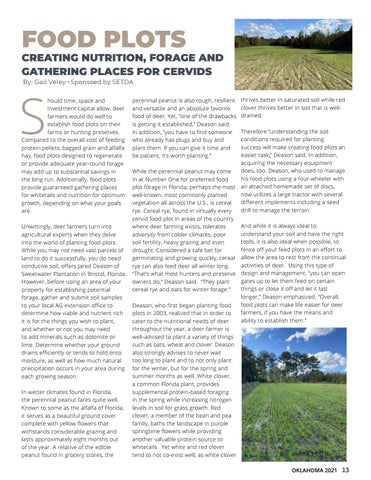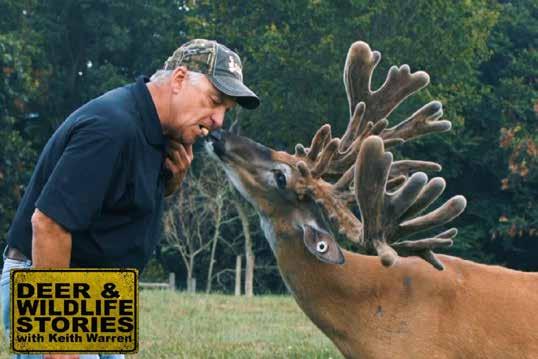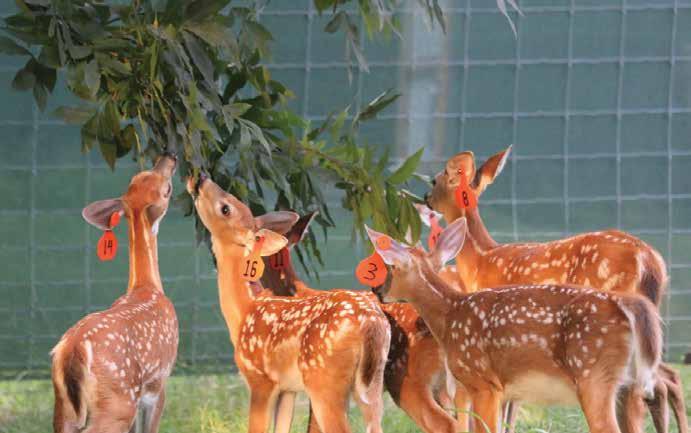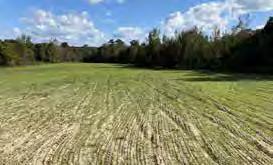FOOD PLOTS
CREATING NUTRITION, FORAGE AND GATHERING PLACES FOR CERVIDS By: Gail Veley • Sponsoed by SETDA
S
hould time, space and investment capital allow, deer farmers would do well to establish food plots on their farms or hunting preserves. Compared to the overall cost of feeding protein pellets, bagged grain and alfalfa hay, food plots designed to regenerate or provide adequate year-round forage may add up to substantial savings in the long run. Additionally, food plots provide guaranteed gathering places for whitetails and nutrition for optimum growth, depending on what your goals are. Unwittingly, deer farmers turn into agricultural experts when they delve into the world of planting food plots. While you may not need vast parcels of land to do it successfully, you do need conducive soil, offers Jared Deason of Sweetwater Plantation in Bristol, Florida. However, before using an area of your property for establishing potential forage, gather and submit soil samples to your local AG extension office to determine how viable and nutrient rich it is for the things you wish to plant, and whether or not you may need to add minerals such as dolomite or lime. Determine whether your ground drains efficiently or tends to hold onto moisture, as well as how much natural precipitation occurs in your area during each growing season. In wetter climates found in Florida, the perennial peanut fares quite well. Known to some as the alfalfa of Florida, it serves as a beautiful ground cover complete with yellow flowers that withstands considerable grazing and lasts approximately eight months out of the year. A relative of the edible peanut found in grocery stores, the
perennial peanut is also tough, resilient and versatile and an absolute favorite food of deer. Yet, “one of the drawbacks is getting it established,” Deason said. In addition, “you have to find someone who already has plugs and buy and plant them. If you can give it time and be patient, it’s worth planting.” While the perennial peanut may come in at Number One for preferred food plot forage in Florida, perhaps the most well-known, most commonly planted vegetation all across the U.S., is cereal rye. Cereal rye, found in virtually every cervid food plot in areas of the country where deer farming exists, tolerates adversity from colder climates, poor soil fertility, heavy grazing and even drought. Considered a safe bet for germinating and growing quickly, cereal rye can also feed deer all winter long. “That’s what most hunters and preserve owners do,” Deason said. “They plant cereal rye and oats for winter forage.” Deason, who first began planting food plots in 2003, realized that in order to cater to the nutritional needs of deer throughout the year, a deer farmer is well-advised to plant a variety of things such as oats, wheat and clover. Deason also strongly advises to never wait too long to plant and to not only plant for the winter, but for the spring and summer months as well. White clover, a common Florida plant, provides supplemental protein-based foraging in the spring while increasing nitrogen levels in soil for grass growth. Red clover, a member of the bean and pea family, baths the landscape in purple springtime flowers while providing another valuable protein source to whitetails. Yet white and red clover tend to not co-exist well, as white clover
thrives better in saturated soil while red clover thrives better in soil that is welldrained. Therefore “understanding the soil conditions required for planting success will make creating food plots an easier task,” Deason said. In addition, acquiring the necessary equipment does, too. Deason, who used to manage his food plots using a four-wheeler with an attached homemade set of discs, now utilizes a large tractor with several different implements including a seed drill to manage the terrain. And while it is always ideal to understand your soil and have the right tools, it is also ideal when possible, to fence off your feed plots in an effort to allow the area to rest from the continual activities of deer. Using this type of design and management, “you can open gates up to let them feed on certain things or close it off and let it last longer,” Deason emphasized. “Overall, food plots can make life easier for deer farmers, if you have the means and ability to establish them.”
OKLAHOMA 2021
13




